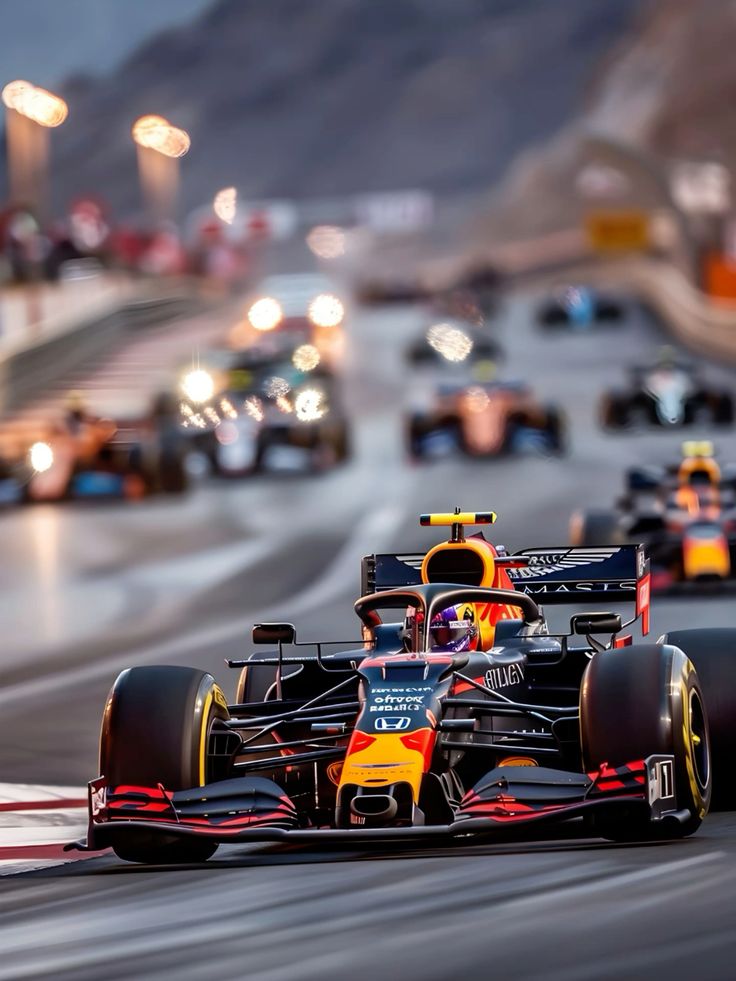Formula 1 (F1), the pinnacle of motorsport, is synonymous with speed, cutting-edge technology, and high-stakes drama. But how did it all begin? The origin of Formula 1 is a story of post-war recovery, ingenuity, and a desire to create the ultimate competition in motor racing. Let’s dive into the fascinating history that birthed this global spectacle.
The Precursor: Grand Prix Racing
Before Formula 1, there was Grand Prix racing, which began in Europe in the early 20th century. The first official Grand Prix took place in 1906 in Le Mans, France. These races were organized by national automobile clubs and featured a mix of manufacturers competing for supremacy. However, the format lacked standardization, with varying rules and car specifications depending on the event.
Grand Prix racing’s popularity grew throughout the 1920s and 1930s, with legendary drivers like Tazio Nuvolari and Rudolf Caracciola becoming household names. The German manufacturers Mercedes-Benz and Auto Union dominated this era, showcasing advanced technology and engineering. However, the outbreak of World War II in 1939 brought motorsport to a halt.
Post-War Reconstruction and the Birth of Formula 1
After World War II, Europe was in ruins, but the spirit of competition and innovation remained strong. Motorsports enthusiasts saw an opportunity to revive racing as a means of fostering unity and showcasing technological progress. To create a cohesive and prestigious series, a set of standardized rules was proposed—thus, the Formula 1 World Championship was born.
The term “Formula” referred to the specific set of rules that cars and drivers had to adhere to, ensuring a level playing field. These regulations covered everything from engine size to weight limits. The “1” denoted that this would be the premier category of single-seater racing.
The Inaugural Season: 1950
The first Formula 1 World Championship season kicked off on May 13, 1950, at Silverstone Circuit in the United Kingdom. This race, known as the British Grand Prix, was attended by King George VI, adding a royal touch to the event.
The inaugural season featured seven races: six Grands Prix in Europe and the iconic Indianapolis 500 in the United States (though the latter was largely ignored by European competitors). Alfa Romeo dominated the season, with Italian driver Giuseppe Farina becoming the first-ever World Champion. Farina narrowly defeated his teammate, Juan Manuel Fangio, who would later become one of the sport’s greatest legends.
Early Challenges and Evolution
The early years of Formula 1 were marked by challenges, including safety concerns, financial instability, and the evolving nature of the sport. Cars were extremely fast but lacked modern safety features like seat belts and crash barriers. Drivers faced immense risks, and fatalities were tragically common.
Despite these challenges, Formula 1 continued to grow in popularity. By the mid-1950s, manufacturers like Ferrari, Maserati, and Mercedes-Benz were vying for dominance. The cars became faster and more sophisticated, and drivers became international celebrities. Juan Manuel Fangio, known as “El Maestro,” won five World Championships during this era, setting a record that stood for decades.
The Commercial Revolution
The 1960s and 1970s brought significant changes to Formula 1. Under the leadership of Bernie Ecclestone, the sport transformed from a loosely organized series of races into a global commercial powerhouse. Ecclestone centralized television rights and sponsorship deals, turning Formula 1 into a highly profitable enterprise.
Technical advancements also accelerated during this period. Innovations such as aerodynamic wings, ground effect technology, and turbocharged engines pushed the limits of what was possible. Teams like McLaren, Lotus, and Williams became household names, while drivers like Ayrton Senna, Niki Lauda, and James Hunt captivated audiences with their skill and charisma.
Formula 1 Today
From its humble beginnings in post-war Europe, Formula 1 has evolved into a global phenomenon with races on every continent except Antarctica. The sport’s popularity continues to grow, driven by advancements in technology, thrilling competition, and iconic rivalries. Modern stars like Lewis Hamilton and Max Verstappen have taken the mantle, thrilling millions of fans worldwide.
Formula 1 remains a testament to human ingenuity and the relentless pursuit of perfection. Its origins remind us of the resilience and creativity that emerged from the ashes of war, shaping a sport that continues to push boundaries and inspire generations.
